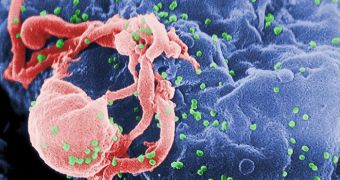Experts with Richmond, California-based Sangamo BioSciences announced on Sunday, September 18, that they've managed to create a new type of therapy against HIV/AIDS. They say that their new approach will greatly help researchers looking for a way of combating this condition.
What that team did was basically demonstrate that it is possible to use a cell-based therapy to significantly reduce the amount of HIV found in a patient's body. The announcement was made at the 51st Interscience Conference on Antimicrobial Agents and Chemotherapy, held in Chicago, Illinois.
One of the reasons why the new work is so outstanding is the fact that the drugs currently available in the fight against HIV tend to only take care of the symptoms, without actually contributing in any considerable amount to reducing HIV concentrations in the body.
In the new approach, experts focus solely on prolonging the lives of T cells, HIV's preferred targets when it infects the human body. These cells are well suited for fighting the invader, but they are usually disabled before they can mount an effective response.
What the researchers do is first take patients of antiretroviral therapy. Then, they take out the vast majority of T cells that contain the famous CD4 receptor, the entry gate the virus has into cells.
Once this is accomplished, the T cells are exposed to zinc finger nuclease, an enzyme that is especially useful for removing the gene that underlies the function of a co-receptor for CD4, called CCR5. After this is done, the experts reinsert the cleansed T cells back into the patient.
Though this may seem a bit extreme, researchers report that they were able to obtain viable, fighting T cells after the procedure, which endured in the bloodstream without falling victims to HIV infections.
This investigation was spurred by studies which indicated that individuals with a naturally-occurring mutation on the CCR5 gene tended to be immune to the effects HIV normally causes in the body.
“The data are very encouraging. We are seeing a statistically significant correlation between our treatment and viral load reduction. This is a big step forward toward our goal of developing a functional cure for the disease,” Sangamo's founding CEO Edward Lanphier explains.
“This is encouraging, and it provides supporting evidence for a study we funded that would take the work to the next step,” adds the vice president of R&D at the California Institute for Regenerative Medicine, Ellen Feigalm, quoted by Technology Review.

 14 DAY TRIAL //
14 DAY TRIAL //